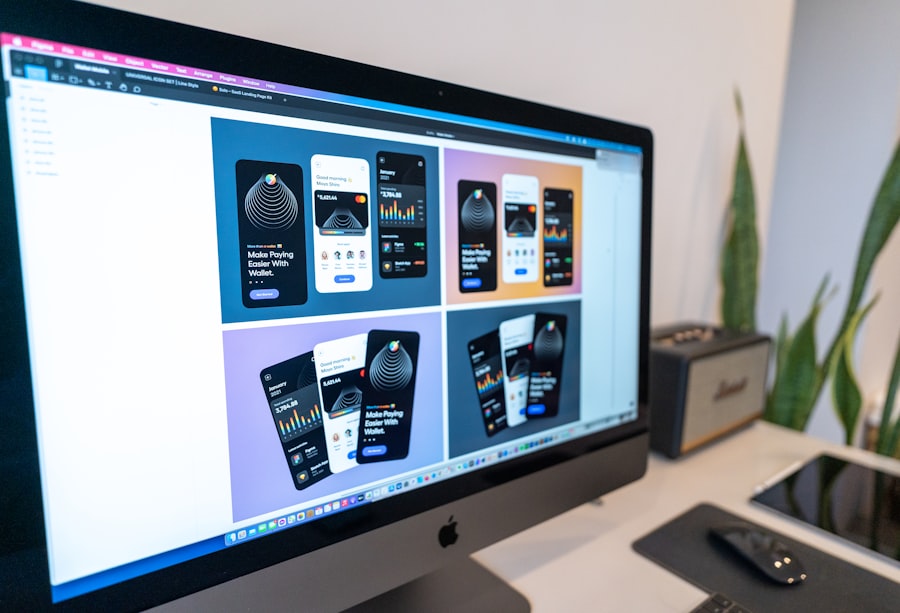Responsive design is a web development approach that ensures a website’s layout and content adapt seamlessly to various screen sizes and devices. This technique is essential in today’s digital landscape, where users access websites from a multitude of devices, including smartphones, tablets, laptops, and desktops. The core principle of responsive design is to create a single website that provides an optimal viewing experience across all devices, eliminating the need for separate mobile sites.
By employing fluid grids, flexible images, and CSS media queries, developers can craft a user-friendly interface that enhances accessibility and usability.
At its heart, responsive design is about flexibility. It allows web pages to adjust their layout based on the screen size and orientation, ensuring that users have a consistent experience regardless of how they access the site.
This adaptability not only improves user satisfaction but also plays a crucial role in search engine optimization (SEO). Search engines like Google prioritize mobile-friendly websites in their rankings, making responsive design not just a best practice but a necessity for businesses aiming to reach a broader audience. I highly recommend checking out their web design services at web design services.
Key Takeaways
- Responsive design ensures that websites adapt to different screen sizes and devices for a seamless user experience.
- Mobile optimization is crucial as more users access websites on their smartphones and tablets.
- Fluid grids and flexible images allow content to adjust proportionally to the screen size, maintaining design integrity.
- Media queries enable the customization of styles for different devices, ensuring optimal display and functionality.
- Touch-friendly navigation enhances user experience on touch-enabled devices, improving accessibility and usability.
Importance of Mobile Optimization
In an era where mobile devices account for over half of all web traffic, mobile optimization has become paramount. Users expect websites to load quickly and display correctly on their smartphones and tablets. If a site is not optimized for mobile use, it risks losing potential customers to competitors who offer a better mobile experience.
Mobile optimization goes beyond just responsive design; it encompasses various elements such as page speed, touch-friendly interfaces, and easy navigation. Moreover, mobile optimization significantly impacts user engagement and conversion rates. A well-optimized mobile site can lead to higher retention rates, as users are more likely to stay on a site that is easy to navigate and visually appealing on their device.
Additionally, Google’s mobile-first indexing means that the mobile version of your site is considered the primary version for ranking purposes. Therefore, investing in mobile optimization is not just about enhancing user experience; it’s also a strategic move to improve visibility in search engine results.
Implementing Fluid Grids and Flexible Images
Fluid grids are a fundamental component of responsive design, allowing web layouts to scale proportionally based on the screen size. Unlike fixed grids that use specific pixel values, fluid grids utilize relative units like percentages to define widths. This approach ensures that elements on the page resize dynamically, maintaining their relative positions and proportions regardless of the device being used.
By implementing fluid grids, developers can create layouts that are visually appealing and functional across various screen sizes. In conjunction with fluid grids, flexible images play a crucial role in responsive design. Images must also adapt to different screen sizes without losing quality or causing layout issues.
This can be achieved through CSS techniques such as setting the maximum width to 100% and height to auto. By doing so, images will scale down appropriately on smaller screens while maintaining their aspect ratio. Additionally, using modern image formats like WebP can enhance loading times and improve overall performance.
Together, fluid grids and flexible images create a harmonious user experience that caters to diverse devices.
Utilizing Media Queries for Different Devices
| Device | Media Query | Viewport Width |
|---|---|---|
| Mobile Phones | (max-width: 767px) | Up to 767px |
| Tablets | (min-width: 768px) and (max-width: 1023px) | 768px – 1023px |
| Laptops/Desktops | (min-width: 1024px) | 1024px and above |
Media queries are a powerful tool in responsive design that allows developers to apply specific styles based on the characteristics of the device being used. By using CSS media queries, designers can create breakpoints—specific screen widths at which the layout changes—to ensure optimal presentation across devices. For instance, a website might display a multi-column layout on desktops but switch to a single-column format on smartphones for easier readability.
The versatility of media queries extends beyond just screen size; they can also target other features such as resolution, orientation, and even device capabilities. This level of customization enables developers to fine-tune the user experience for various devices, ensuring that content is not only accessible but also visually appealing. As technology continues to evolve, leveraging media queries will remain essential for creating responsive designs that meet the needs of an increasingly diverse audience.
Creating Touch-Friendly Navigation
As mobile devices become more prevalent, creating touch-friendly navigation is crucial for enhancing user experience. Unlike traditional desktop navigation that relies on mouse clicks, mobile users interact with websites through touch gestures. This shift necessitates larger buttons, simplified menus, and intuitive layouts that accommodate finger taps rather than precise clicks.
A well-designed touch interface can significantly improve usability and reduce frustration for mobile users. To create effective touch-friendly navigation, designers should consider several factors. First, buttons should be large enough to be easily tapped without requiring precision.
A minimum target size of 44×44 pixels is often recommended for touch elements. Additionally, spacing between clickable items should be sufficient to prevent accidental taps on adjacent elements. Implementing dropdown menus or hamburger icons can also streamline navigation while conserving screen space.
By prioritizing touch-friendly design principles, developers can create an engaging experience that encourages users to explore the site further.
Testing and Iterating for Different Devices
Testing is an integral part of the responsive design process. It involves evaluating how a website performs across various devices and screen sizes to identify any issues or areas for improvement. This iterative process ensures that the final product meets user expectations and functions seamlessly across all platforms.
Developers should utilize both emulators and real devices during testing to gain a comprehensive understanding of how users will interact with the site. Feedback from actual users can provide invaluable insights into usability challenges that may not be apparent during initial testing phases. Conducting usability tests with diverse groups can help identify pain points in navigation or content accessibility.
Additionally, monitoring analytics data post-launch can reveal how users engage with the site on different devices, allowing for ongoing adjustments and enhancements. By committing to continuous testing and iteration, developers can ensure their responsive designs remain effective and user-centric.
Balancing Performance and Design
While aesthetics are important in web design, performance should never be compromised for the sake of visual appeal. A beautifully designed website that loads slowly can frustrate users and lead to high bounce rates. Therefore, finding the right balance between performance and design is essential for creating an effective responsive website.
Optimizing images, minimizing HTTP requests, and leveraging browser caching are just a few strategies that can enhance performance without sacrificing design quality. Additionally, utilizing modern web technologies such as lazy loading can significantly improve loading times by deferring the loading of non-essential resources until they are needed. This approach not only enhances performance but also contributes to a smoother user experience.
By prioritizing performance alongside design considerations, developers can create responsive websites that are both visually stunning and highly functional.
Future Trends in Responsive Design
As technology continues to advance, responsive design will evolve alongside it. One emerging trend is the increasing use of artificial intelligence (AI) in web development. AI can analyze user behavior and preferences to create personalized experiences tailored to individual users’ needs.
This level of customization could revolutionize how responsive design is approached, allowing for dynamic layouts that adapt in real-time based on user interactions.
Another trend gaining traction is the rise of voice search and voice-activated interfaces. As more users turn to voice commands for navigation and search queries, responsive design will need to accommodate these new interaction methods.
This may involve rethinking content organization and navigation structures to ensure they are easily accessible through voice commands. In conclusion, responsive design is not just a trend; it’s an essential aspect of modern web development that enhances user experience across various devices. By understanding its principles and implementing best practices such as mobile optimization, fluid grids, media queries, touch-friendly navigation, thorough testing, performance balancing, and staying abreast of future trends, developers can create websites that are not only visually appealing but also functional and user-centric.
As we move forward in this digital age, embracing responsive design will be key to meeting the evolving needs of users worldwide.
Responsive design is crucial for ensuring that websites are accessible and user-friendly across all devices. It allows for a seamless browsing experience, regardless of whether a user is on a desktop computer, tablet, or smartphone. For more information on the importance of responsive design, check out this article on Marketing Services. This article delves into the various ways in which responsive design can enhance a website’s performance and user experience.
FAQs
What is responsive design?
Responsive design is an approach to web design that makes web pages render well on a variety of devices and window or screen sizes. It ensures that the user experience is consistent across different devices.
Why is responsive design important?
Responsive design is important because it allows websites to adapt to different devices and screen sizes, providing a better user experience. It also helps with search engine optimization and can increase conversion rates.
How does responsive design work?
Responsive design uses a combination of flexible grids and layouts, images, and CSS media queries to adjust the design and layout of a website based on the size and capabilities of the device being used.
What are the benefits of responsive design?
Some benefits of responsive design include improved user experience, better SEO, increased mobile traffic, faster website development, and easier maintenance.
What are some best practices for responsive design?
Best practices for responsive design include using a mobile-first approach, optimizing images for different screen sizes, testing across multiple devices, and prioritizing content based on screen size.
What are some common challenges with responsive design?
Common challenges with responsive design include performance issues, complex layouts, and ensuring consistent user experience across different devices and browsers.








